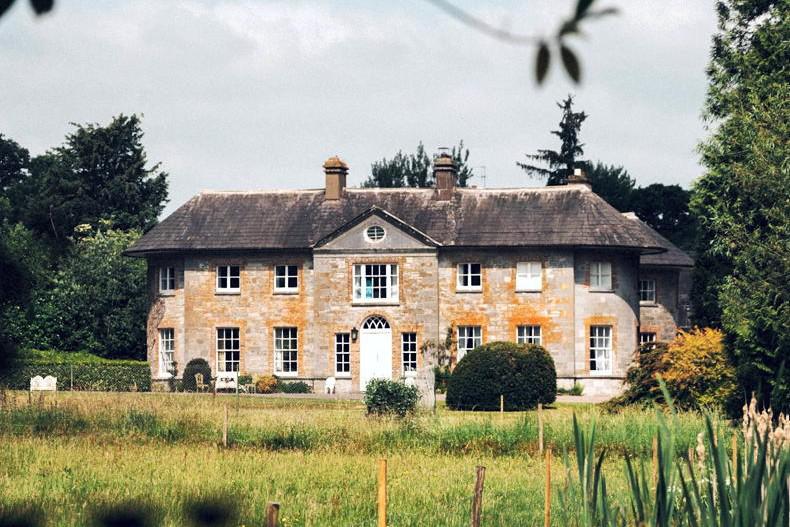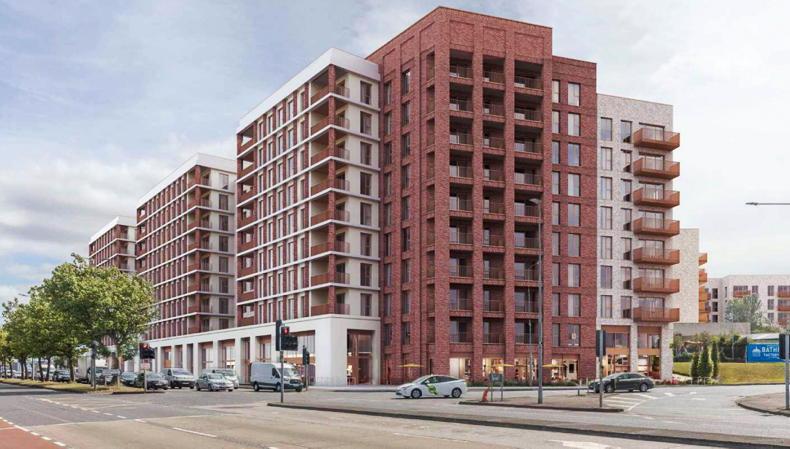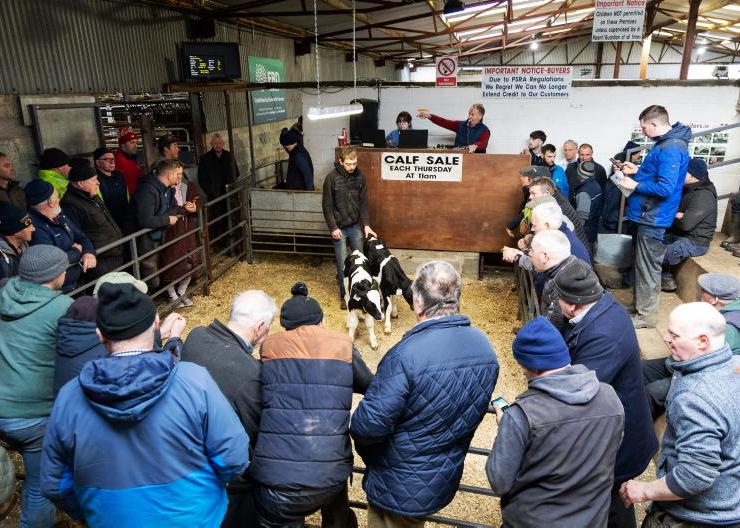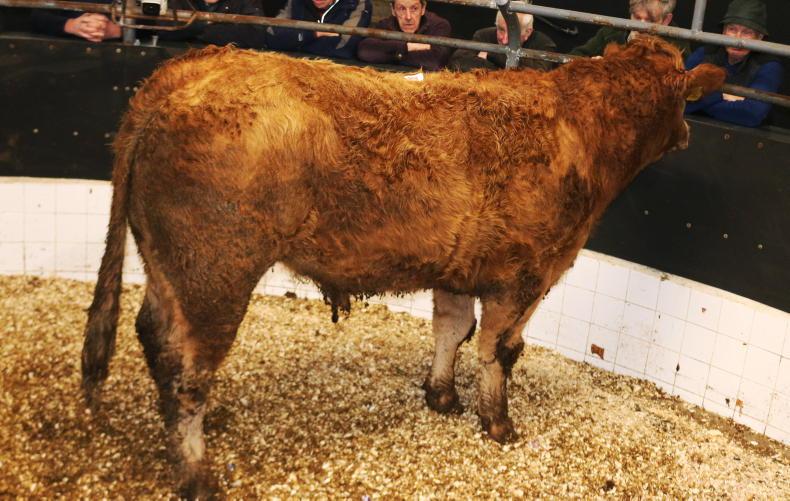The Dublin Cattle Market has cast a long shadow across the Irish livestock scene – even though it closed more than 50 years ago.
The weekly sales at the Prussia Street site on Dublin’s northside were at the heart of the country’s cattle and sheep trade from the late 1860s to the early 1970s.
The market was effectively the shop window for Ireland’s booming cattle exports, with buyers from Britain – and the Continent – coming to battle with Irish exporters for the 5,000 or so cattle on offer each week.
Similar numbers of sheep were sold through the Dublin Corporation facility, with the stock bought primarily for slaughter or export.
Having such a rural business in an urban setting led to some curious anomalies – as Paddy Gernon’s story illustrates.
A northside Dubliner by birth, Paddy – who died earlier this month – was a successful live exporter who shipped thousands of cattle to Britain, the Continent and beyond.
Like many other Dubliners, Paddy’s introduction to the livestock business came courtesy of the Dublin Cattle Market.
Parents and youth
Gernon’s parents worked in St Brendan’s Hospital, Grangegorman as psychiatric nurses and the family lived locally.
As a youngster in the 1940s, Paddy regularly saw cattle being driven on foot up Rathdown Road and North Circular Road on the way from the market to the quays at North Wall.
He was intrigued by all the activity and was helping out around the market by the time he was seven or eight years old.
His task each Wednesday was to help drive two or three cows from Cremins yard on Mallow Street up past Doyle’s Corner. This work usually earned him around six pence.
“There was one man in particular who sticks in my mind and he was an elderly man and he would come every so often. He would buy two, maybe three, maybe even five cows at a time.
"He was from the north County Dublin and I used to bring them up past my house to Doyles Corner [in Phibsborough] and when we’d get to the Brian Boru pub he’d tell me to go back,” Paddy recalled in an interview a long time later.

Up to 5,000 cattle and 7,000 sheep were sold in the Dublin Cattle Market each week during the 1950s and early 1960s.
By the early 1950s, Paddy was earning up to £2 a week booking cattle for a shipping agent, Francie Dwyer. This work was often completed during school hours, but it was a lucrative sideline for the teenage Gernon.
“Francie Dwyer used to give me a pound, and then I’d go up and meet the Englishmen that had bought the cattle. They used to stop in the Four Courts Hotel. And I’d cycle up and tell them that everything was shipped and they’d all give me a half a crown,” he explained.
Although Paddy seemed destined to work in the livestock business, the move into the trade full-time actually happened by accident.
Belfast and the Callinans
Shortly after his 17th birthday, he went to Belfast to join the Royal Navy. However, a chance meeting the night before enlisting saw him take a job with the live shippers Callinans instead.
Callinans was based in Belfast and shipped cattle to both Scotland and England. He later joined the McMonagle brothers, well-known exporters who operated in both the North and South.
Paddy maintained that his time in the North gave him a greater appreciation of the different types of cattle that buyers wanted in Scotland compared to those that were preferred by farmers in the English midlands.
Simply put, certain breeds suited certain areas.
“There was a great run on the blue heifers and the Angus bullock. They all went to Scotland. The Herefords would be going down to Banbury and North Allerton in England,” he explained.
Although one-third of all cattle finished and slaughtered in Britain in the 1950s came from Ireland, Paddy pointed out that this was not solely down to the hardiness of the Irish stock and their cheapness relative to British stock.
Crucially, Irish cattle also qualified for British supports, or deficiency payments.
This meant that English and Scottish buyers simply had to hold the Irish cattle for three months, at which point they became British and were eligible for the UK subsidies.
“The English buyers had a great advantage. They used to come to the Dublin market to buy cattle and they knew what they would get in 13 weeks’ time from the British Fatstock Board,” Paddy said.
Back in Dublin
By the mid-1950s Gernon was back in Dublin and working with Smith-Griffin, one of the leading sales-masters in the Dublin Cattle Market.
He experienced the market in its pomp and at the peak of its power, when record numbers of cattle and sheep were sold through its yards.
In 1957, almost 250,000 cattle were traded at the market, while the number of sheep peaked at 425,000 animals in 1960.
Indeed, such was the importance of the market in those heady days that reports from its sales were carried in the daily newspapers and on RTÉ, and the prices from Prussia Street set the tone of the sheep and cattle at fairs right around the country.
However, the growth of the private and co-op marts from the late 1950s seriously undermined the primacy of the Dublin Cattle Market and eroded its importance.
The numbers sold through the market slowly fell away and had dropped to a few hundred by the early 1970s.
The curtain finally came down on the market in May 1973 when Dublin Corporation said it was no longer willing to finance the sales yards’ losses.
However, the market didn’t close without Gernon achieving one snippet of immortality from his time there.
Johnson Mooney and O'Brien advert
Paddy had the distinction of starring in a bread advert for Johnson Mooney and O’Brien when they used footage of him leading one of the last cattle drives from Prussia Street.
Paddy remained in the cattle business following the closure of the market. Indeed, he was one of the leading shipping agents for cattle on the North Wall in the 1970s.
Moreover, he became a major cattle exporter in his own right, shipping from Dublin and Wicklow in the early days.
Paddy was also very active with the Irish Cattle Exporters Association and served as the organisation’s representative on the board of Bord Bia for a number of years.
He had certainly come a long way since his days of moving a few cows from Cremin’s yard to the Brian Boru pub.
And some of that success was down to the Dublin Cattle Market and the opportunity it gave him to carve out a career in the livestock trade.
An opportunity Paddy Gernon grabbed with both hands.
The Dublin Cattle Market has cast a long shadow across the Irish livestock scene – even though it closed more than 50 years ago.
The weekly sales at the Prussia Street site on Dublin’s northside were at the heart of the country’s cattle and sheep trade from the late 1860s to the early 1970s.
The market was effectively the shop window for Ireland’s booming cattle exports, with buyers from Britain – and the Continent – coming to battle with Irish exporters for the 5,000 or so cattle on offer each week.
Similar numbers of sheep were sold through the Dublin Corporation facility, with the stock bought primarily for slaughter or export.
Having such a rural business in an urban setting led to some curious anomalies – as Paddy Gernon’s story illustrates.
A northside Dubliner by birth, Paddy – who died earlier this month – was a successful live exporter who shipped thousands of cattle to Britain, the Continent and beyond.
Like many other Dubliners, Paddy’s introduction to the livestock business came courtesy of the Dublin Cattle Market.
Parents and youth
Gernon’s parents worked in St Brendan’s Hospital, Grangegorman as psychiatric nurses and the family lived locally.
As a youngster in the 1940s, Paddy regularly saw cattle being driven on foot up Rathdown Road and North Circular Road on the way from the market to the quays at North Wall.
He was intrigued by all the activity and was helping out around the market by the time he was seven or eight years old.
His task each Wednesday was to help drive two or three cows from Cremins yard on Mallow Street up past Doyle’s Corner. This work usually earned him around six pence.
“There was one man in particular who sticks in my mind and he was an elderly man and he would come every so often. He would buy two, maybe three, maybe even five cows at a time.
"He was from the north County Dublin and I used to bring them up past my house to Doyles Corner [in Phibsborough] and when we’d get to the Brian Boru pub he’d tell me to go back,” Paddy recalled in an interview a long time later.

Up to 5,000 cattle and 7,000 sheep were sold in the Dublin Cattle Market each week during the 1950s and early 1960s.
By the early 1950s, Paddy was earning up to £2 a week booking cattle for a shipping agent, Francie Dwyer. This work was often completed during school hours, but it was a lucrative sideline for the teenage Gernon.
“Francie Dwyer used to give me a pound, and then I’d go up and meet the Englishmen that had bought the cattle. They used to stop in the Four Courts Hotel. And I’d cycle up and tell them that everything was shipped and they’d all give me a half a crown,” he explained.
Although Paddy seemed destined to work in the livestock business, the move into the trade full-time actually happened by accident.
Belfast and the Callinans
Shortly after his 17th birthday, he went to Belfast to join the Royal Navy. However, a chance meeting the night before enlisting saw him take a job with the live shippers Callinans instead.
Callinans was based in Belfast and shipped cattle to both Scotland and England. He later joined the McMonagle brothers, well-known exporters who operated in both the North and South.
Paddy maintained that his time in the North gave him a greater appreciation of the different types of cattle that buyers wanted in Scotland compared to those that were preferred by farmers in the English midlands.
Simply put, certain breeds suited certain areas.
“There was a great run on the blue heifers and the Angus bullock. They all went to Scotland. The Herefords would be going down to Banbury and North Allerton in England,” he explained.
Although one-third of all cattle finished and slaughtered in Britain in the 1950s came from Ireland, Paddy pointed out that this was not solely down to the hardiness of the Irish stock and their cheapness relative to British stock.
Crucially, Irish cattle also qualified for British supports, or deficiency payments.
This meant that English and Scottish buyers simply had to hold the Irish cattle for three months, at which point they became British and were eligible for the UK subsidies.
“The English buyers had a great advantage. They used to come to the Dublin market to buy cattle and they knew what they would get in 13 weeks’ time from the British Fatstock Board,” Paddy said.
Back in Dublin
By the mid-1950s Gernon was back in Dublin and working with Smith-Griffin, one of the leading sales-masters in the Dublin Cattle Market.
He experienced the market in its pomp and at the peak of its power, when record numbers of cattle and sheep were sold through its yards.
In 1957, almost 250,000 cattle were traded at the market, while the number of sheep peaked at 425,000 animals in 1960.
Indeed, such was the importance of the market in those heady days that reports from its sales were carried in the daily newspapers and on RTÉ, and the prices from Prussia Street set the tone of the sheep and cattle at fairs right around the country.
However, the growth of the private and co-op marts from the late 1950s seriously undermined the primacy of the Dublin Cattle Market and eroded its importance.
The numbers sold through the market slowly fell away and had dropped to a few hundred by the early 1970s.
The curtain finally came down on the market in May 1973 when Dublin Corporation said it was no longer willing to finance the sales yards’ losses.
However, the market didn’t close without Gernon achieving one snippet of immortality from his time there.
Johnson Mooney and O'Brien advert
Paddy had the distinction of starring in a bread advert for Johnson Mooney and O’Brien when they used footage of him leading one of the last cattle drives from Prussia Street.
Paddy remained in the cattle business following the closure of the market. Indeed, he was one of the leading shipping agents for cattle on the North Wall in the 1970s.
Moreover, he became a major cattle exporter in his own right, shipping from Dublin and Wicklow in the early days.
Paddy was also very active with the Irish Cattle Exporters Association and served as the organisation’s representative on the board of Bord Bia for a number of years.
He had certainly come a long way since his days of moving a few cows from Cremin’s yard to the Brian Boru pub.
And some of that success was down to the Dublin Cattle Market and the opportunity it gave him to carve out a career in the livestock trade.
An opportunity Paddy Gernon grabbed with both hands.










SHARING OPTIONS